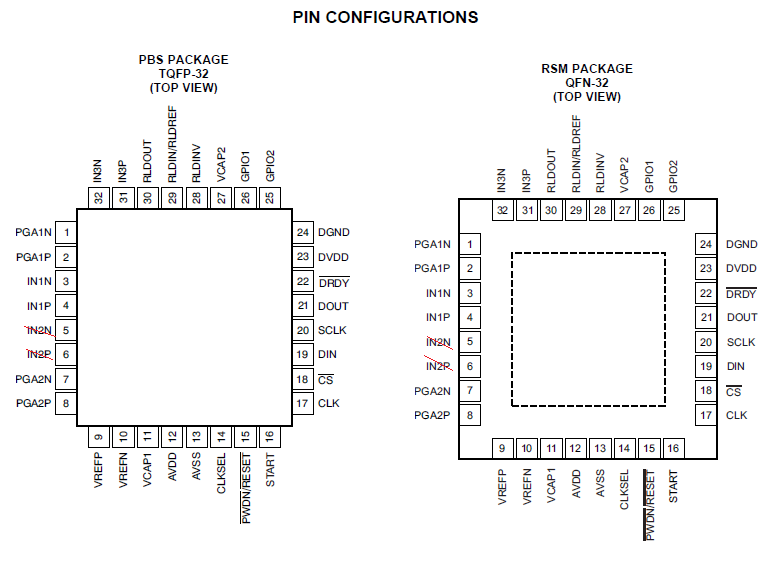I have 4 questions about ADS1191/ADS1192 and ADS1x9xECG-FE
1.)How should we connect to IN2P and IN2N of ADS1191(ADC 1ch)?
Customer wants to use ADS1191(ADC 1ch). Datasheet page9 and 10 describe 'PIN CONFIGURATIONS' and 'PIN ASSIGNMENTS'. It seems for ADS1192(ADC 2ch), because these have IN2P and IN2N(ADC Chennel2). Do you have 'PIN CONFIGURATIONS' and 'PIN ASSIGNMENTS' for ADS1191(ADC 1ch)? If ADS1191 and ADS1192 are same 'PIN CONFIGURATIONS' and 'PIN ASSIGNMENTS', How should we set for IN2P and IN2N of ADS1191? Non-connection(N/C) or GND?
2.) Datasheet Error about CLK_EN bit of ADS1191/ADS1192.
Datasheet page24 shows following.
The CLKSEL pin selects either the internal or external clock. The CLK_EN bit in the CONFIG1 register enables and disables the oscillator clock to be output in the CLK pin
But CONFIG1 register doesn't include CLK_EN. Page36 'Table 8. Register Assignments' shows that CLK_EN is in CONFIG2 register. I think that CLK_EN of CONFIG2 is correct.
【ADS1191/ADS1192 Datasheet】
3.)'Lead Off Status' for ADS1x9xECG-FE Software
The table of page 27 shows 'Lead Off Status'. What's the meaning of the status during blinking?
4.)Lead Off Status for RL
The table of page 40 shows 4 Leads(RA、LA、LL、RL), but figure of page 27 doesn't include 'RL off' on 'Leads'. Is this correct? or error of UserGuide?
【ADS1x9xECG-FE UserGuide】



